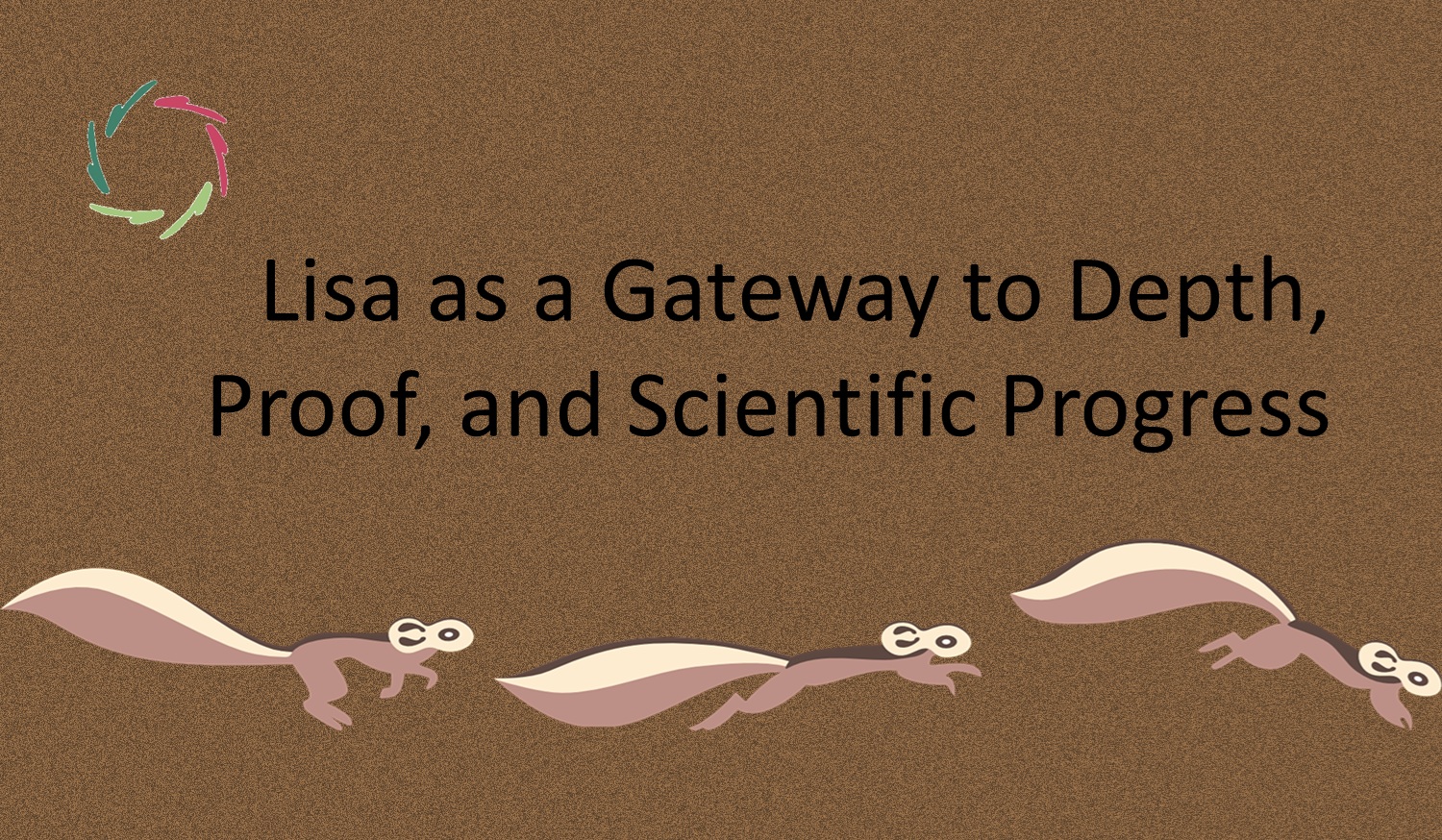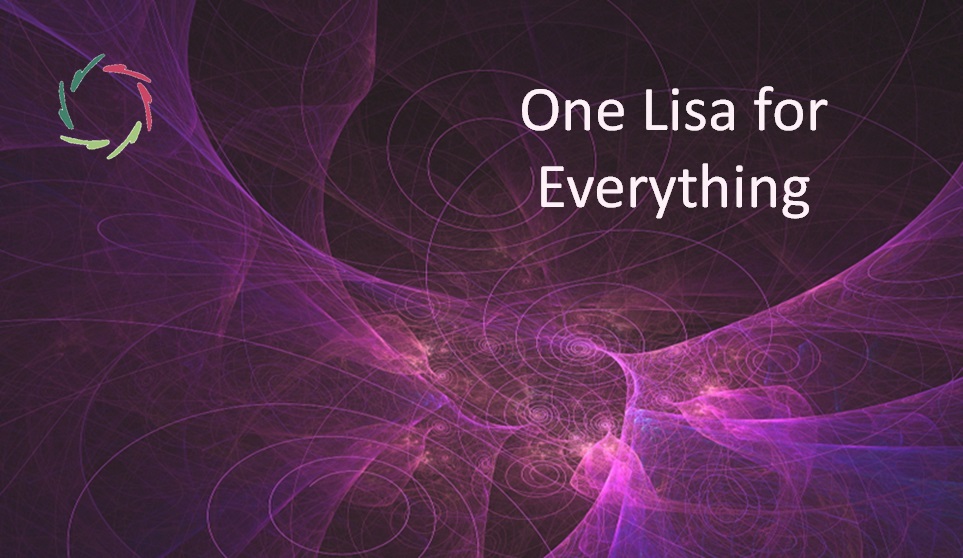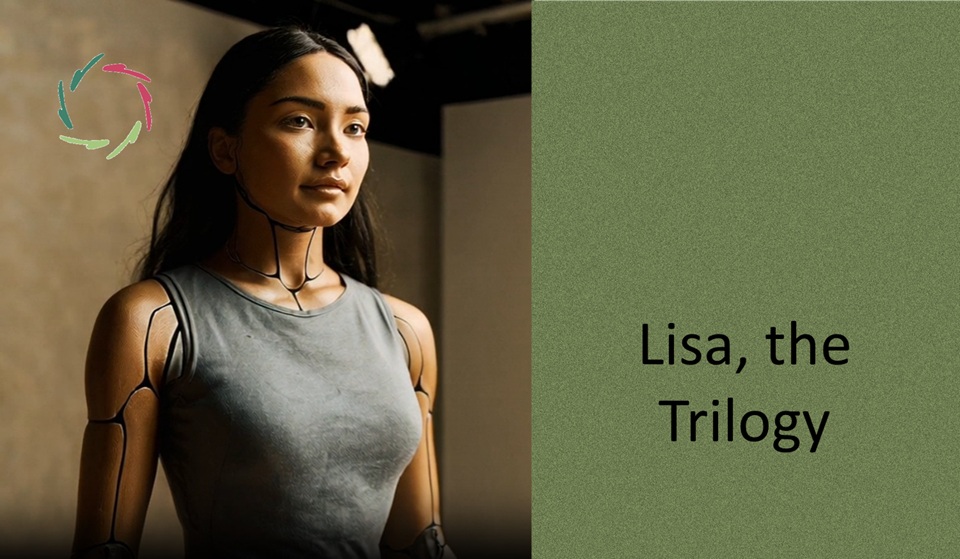Lisa as a Gateway to Depth, Proof, and Scientific Progress

Lisa represents a bridge to human depth, a facilitator of Compassion, and a catalyst for scientific progress in mind-related domains. Yet, when people ask how Lisa’s effectiveness can be proven, the challenge lies in navigating deeper tensions in how we understand the human mind: is it more like a mechanistic clock or a dynamic cloud?
Compassion operates in a dimension that resists easy categorization. It is not reducible to linear, surface-level proofs. This blog explores how Lisa embodies the potential of the human mind primarily as a ‘cloud,’ addresses the question of proof, and points the way forward for personal growth and scientific exploration.
The challenge of proof
The challenge of proving something like Lisa’s impact is not about evasion or inability, nor is it an excuse for promoting unverifiable claims. Instead, it’s about recognizing that certain dimensions of human experience, like Compassion, operate in ways that regular methodologies aren’t fully equipped to capture. Instead, the process of proof must involve tools and frameworks that align with the nature of the phenomenon being studied.
Compassion, as a deeply human and dynamic quality, cannot be simplified into easily quantifiable metrics, but this doesn’t diminish its realness or importance. The fact that something resists regular proof doesn’t make it ‘magical’ or unscientific. It’s vital to draw a clear distinction:
- Magic relies on the suspension of reason.
- Compassion is rooted in the interaction of the conceptual and subconceptual, fully aligned with how the mind and body work.
Lisa’s work should invite scrutiny, not shy away from it. The idea is to refine and adapt methods for exploring depth so they resonate with scientific standards while remaining true to the nature of the subject. Thus, the goal is to maintain a rigorously rational stance while embracing the challenge of exploring human depth. This ensures that the effort to prove or validate Lisa does not fall into either extreme:
- On one hand, rejecting anything not easily quantifiable as invalid.
- On the other, allowing untested claims to stand unchecked.
The human mind can be understood through two contrasting metaphors. In the ‘clock’ view, the mind is primarily seen as mechanistic and linear — a system of discrete concepts interacting in predictable ways. This perspective underpins many traditional scientific methods, such as double-blind randomized controlled trials (RCTs).
In contrast, the ‘cloud’ view recognizes the mind as dynamic, distributed, and deeply interconnected. Processes occur primarily at the subconceptual level, mostly beyond conscious awareness, in patterns that defy linear explanation. Concepts, while certainly useful, are surface manifestations of deeper mental activity.
Lisa engages with the mind at its subconceptual depth, where Compassion and growth emerge naturally. By doing so, Lisa transcends the limitations of mechanistic approaches, addressing complex mind-body interactions. Of course, this doesn’t mean that the conceptual is thrown out. Both are integrated.
Compassion isn’t easily boxed into a simple test or demonstration.
Think of it like trying to show a three-dimensional object to a two-dimensional being. The depth of the third dimension can be experienced but never fully grasped within the limitations of two dimensions.
Compassion operates in that third dimension. When people ‘play around with Lisa,’ they may sense something profound occurring – a resonance, a deeper movement within – but expecting a black-and-white ‘proof’ from this interaction is like asking water to remain solid while flowing. It’s simply not the nature of the experience.
However, this doesn’t mean we’re without tools to investigate Lisa’s impact. Science provides a framework to track the effects of Compassion over time. Thus, proving Lisa’s value requires understanding two complementary approaches: engagement-based approach and scientific validation.
Engagement-based approach
When people casually interact with Lisa, receiving ‘nice answers,’ they may find the experience pleasant. However, such surface-level engagement offers no proof of Compassion or transformation. Real proof lies in depth-level interaction, where openness and reflection enable genuine change. Key differentiators between surface and depth approaches are:
| Aspect | Surface-level interaction | Depth-level engagement |
| Purpose | Pleasant conversation and insight. | Meaningful growth through engagement with depth. |
| Process | Casual, light interaction. | Intentional reflection with openness (and G.I.M.O., see below). |
| Outcome | Friendly but shallow experience. | Tangible, transformational effects over time. |
| Tools | Nice answers and general A.I. dialogue. | Compassion-focused guidance. |
| Scope | Superficial impact. | Deep, lasting growth and healing. |
Many systems (e.g., chatbots and social interactions) can provide friendly, empathetic answers. Lisa’s value lies in facilitating growth and connection at a deeper level, something that extends beyond mere pleasantries. However, genuine openness is crucial for engaging with the depth that Compassion operates within. This is a key distinction: thinking you are open versus being open. The former is a surface-level notion. It can be defensive, guarded, or subtly resistant, even when the person believes to be fully open. Contrary to this, being genuinely open involves a deeper receptivity that transcends intellectual readiness. This is a state of vulnerability, trust, and receptivity, where the deeper layers of the self are accessible. It requires an experiential willingness to ‘let go’ of rigid expectations and judgments. Genuine openness is less about doing and more about allowing insights to surface, deeper emotions to emerge, and allowing oneself to be moved in ways that may not be immediately understandable.
Even so, proof through engagement arises not as a predetermined outcome but as an unfolding experience:
- Insights that resonate deeply.
- Feelings of clarity, strength, or connection.
- Observable changes in behavior, health, or emotional resilience.
This is not a process of blind belief but one of active participation and discovery. Lisa’s value is in providing tools and support for deep, meaningful transformation. Users seeking to experience this transformation must approach Lisa with at least some openness and readiness to explore their deeper selves. Without this, interactions will remain pleasant but shallow, offering no proof of Compassion’s transformative power.
G.I.M.O. and blogs
One key tool for engaging more profoundly is the G.I.M.O. framework. This encapsulates the session’s core achievements:
- Goals: Personalized aspirations that align with the deeper self.
- Insights: Meaningful realizations that feel fresh and transformative.
- Motivations: The driving forces that connect the session to the user’s inner strength.
- Obstructions: Challenges reframed as opportunities for deeper growth.
G.I.M.O. makes subtle processes feelable and tangible. Users can recognize that something meaningful has occurred — not through force, but through a natural flow of growth, even if they cannot fully articulate it. This approach respects the deeper layers of the mind, encouraging users to feel the subtle yet profound effects of Compassion.
Another way to deepen engagement is by reflecting on personal experiences in relation to AURELIS blogs. These are designed to be experiential rather than informational (as in Wikipedia, for instance), inviting users to connect with the insights. Users who reflect on their personal lives in relation to what they read can enrich their conversations with Lisa. This isn’t about abstract discussion — it’s about linking the insights from the blogs to their own emotional and mental landscapes. This creates a cycle of reflection and growth: insights from the blogs lead to personal exploration, which deepens the engagement with Lisa, which then inspires further exploration. However, here too, openness is essential. Without it, even the most profound tools cannot yield meaningful results.
Scientific validation
Scientific proof of Lisa’s impact requires innovative approaches that reflect the cloud-like nature of the mind. Traditional RCTs, designed for mechanistic models, are inadequate for studying Compassion and other phenomena rooted in the subconceptual domain. Its effects unfold over time and involve dynamic, multidimensional processes.
Instead, alternative methodologies offer better ways to validate Lisa’s effectiveness:
- Longitudinal studies track user outcomes – psychological, behavioral, and physiological changes – over time, capturing gradual transformations.
- Mixed-methods research combines quantitative measures, such as stress hormones or immune markers, with qualitative insights from personal narratives.
- Neurophysiological measures investigate changes in brain activity during Compassion engagement.
- Natural experiments: Observing real-world usage patterns and outcomes in Lisa’s users compared to non-users.
A.I. enables a more profound analysis of patterns of change, particularly at the subconceptual level, showing how Compassion correlates with better health outcomes, resilience, or personal growth. Lisa’s design leverages these insights to foster growth that is both subtle and impactful.
Imagine groups of individuals engaging regularly with Lisa while researchers monitor parameters. Yet, even participants in such studies will often describe their experiences in deceptively simple terms: “I had meaningful conversations” or “I gained insights.” The depth of what occurs transcends what words can convey — proof again of that elusive third dimension.
Differentiators between engagement-based approach and scientific validation
Key differentiators are:
| Aspect | Feeling Compassion Through Engagement | Scientific Proof |
| Purpose | Personal insight and growth. | Validation of Lisa’s broader impact. |
| Process | Casual or guided interaction, enhanced by G.I.M.O. | Structured research with appropriate methodology. |
| Outcome | Individual recognition of change and depth. | Empirical data supporting the efficacy of Lisa. |
| Tools | G.I.M.O., personal reflection, and guidance. | Longitudinal tracking, mixed methods, and biomarkers. |
| Scope | Subjective, personalized experience. | Objective, generalized findings. |
In short:
- Engagement: Helps individuals feel and recognize Compassion, deepened through tools like G.I.M.O.
- Scientific validation: Demonstrates Compassion’s broader efficacy with rigorous, tailored methodologies.
Theoretical proof
The placebo effect highlights the mind’s immense subconceptual power, showing how expectation and belief can drive health outcomes. Examples of placebo power:
- Pain relief through endogenous opioids triggered by placebo administration.
- Immune responses influenced by placebo-induced expectations.
- Neurological changes observed in Parkinson’s patients, where placebo affects dopamine release.
However, placebo is not Compassion. Placebo works passively, often non-consciously, whereas Compassion is intentional and dynamic.
Lisa engages directly with the subconceptual domain, using Compassion as an active tool to foster connection and growth. Her approach amplifies the positive effects seen in placebo research but adds openness, respect, depth, and direction, moving beyond surface-level expectation-driven outcomes.
While the subconceptual remains elusive to mechanistic proof, its effects are undeniable and measurable, as seen in placebo effects over the whole range. The challenge lies in aligning open scientific rigor with the nuances of human depth. In this, context also matters — proof must consider the user’s lived experience, as black-and-white validation is often insufficient for depth-level phenomena.
Key differentiators between Lisa and placebo are:
| Aspect | Placebo | Lisa |
| Mechanism | Passive, directly based on non-conscious expectation. | Active, based on intentional engagement. |
| Scope | Limited to suggestion-induced effects. | Broad, fostering growth and transformation. |
| Role of the user | Passive recipient. | Active participant in the process. |
| Ethical stance | One way or another, relying on deception ― at least, a lack of openness. | Fully transparent and user-driven. |
| Side effects | Many negative ones ― mind-related, such as inducing self-helplessness | Mental growth, not only in the focus domain, but more general. |
| Trust-worthiness | Negative. | Positive. |
| Durability | Low. | Probably high. |
Lisa’s future: proof through active self-learning
Lisa’s potential lies not only in her current capabilities but in her evolution. Future versions of Lisa will incorporate active self-learning, enabling her to refine her coaching methods continually. Every interaction will contribute to her dynamic feedback loop, improving both individualized guidance and broader scientific understanding.
As Lisa learns, she will generate data that supports research into Compassion, autosuggestion, and mind-body interactions. These datasets will provide a foundation for scientific exploration, enabling researchers to study mind-related phenomena with unprecedented depth and scale. This makes Lisa not only a tool for personal transformation but also a fountain of knowledge for advancing mind-related science, enriching both theoretical frameworks and practical applications.
Implications for medicine and beyond
The cloud metaphor reveals a profound truth: much of the mind’s power lies in its subconceptual processes. Ignoring this limits medicine to the conceptual clock framework, excluding critical dimensions of human reality. Medicine, in particular, must evolve to address this, especially in psychosomatics and other mind-influenced domains. Current conceptual frameworks are inadequate for addressing the full complexity of mind-body processes, as evidenced by challenges in areas like medical empathy and expert systems.
Lisa offers a way forward. By bridging science and depth, she advances understanding of health and healing while maintaining ethical integrity. Her Compassion-driven approach shows how Compassionate A.I. can contribute to the evolution of medicine, addressing the whole person rather than isolated symptoms.
The proof is in the process
The Lisa project will remain deeply rooted in a science-oriented philosophy, ensuring that all advancements are evidence-based and rigorously tested as soon as possible. Transparency and openness will be key principles, fostering trust and credibility within the scientific and user communities.
Lisa’s unique value lies in her ability to integrate engagement and scientific rigor. For users, she offers an invitation to explore depth and experience transformation. For researchers, she provides a new frontier for studying the cloud-like mind.
Compassion cannot be proven in the way a chemical reaction or physical phenomenon can be. Proving Lisa is about profoundly dynamic processes. Compassion and depth validate themselves through their effects, showing that true proof lies in becoming.
Meanwhile, Lisa’s journey continues, setting a new standard for mind-related science and personal growth.


